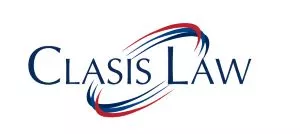Non-Fungible Tokens ("NFTs") are in essence, digital tokens that represent and authenticate ownership of particular digital or real world items. Just as a registered sale deed represents ownership of title of a house, NFTs can be used to represent ownership of things like art, music, photos, digital creations, GIFs and in some instances even real estate, in the form of a digital token. NFTs are created by using the underlying blockchain technology of most crypto-currencies. While most present day NFTs are secured by the ethereum blockchain, a creator may choose to develop a NFT on other blockchain technologies. Readers unfamiliar with crypto-currencies may refer to an earlier post by V. Luniya here.
Unlike traditional/ fiat currencies and modern day crypto currencies, NFTs are unique and as the name suggests, non-fungible, i.e. NFTs are not interchangeable. While one can easily exchange a bitcoin for another currency or buy other assets, NFTs are unique and cannot be exchanged for any other item. The ownership of a NFT confers title/ ownership over a specific item and can only have one official owner at any given point of time. This fact further distinguishes NFTs from other crypto-currencies as in most cases the latter has infinite supply. As NFTs are created and based on a blockchain, which is essentially a decentralised public ledger, it is almost impossible for one to duplicate or modify records of ownership of a NFT and hence NFTs create a digital scarcity which aids in adding tangible value. Fungible currencies, on the other hand, can be easily exchanged because they are primarily defined by their value rather than their unique properties. For instance one bitcoin is the same value as any other bitcoin and a hundred rupee note in your wallet is the same as any other hundred rupee note and can be exchanged for other currencies or items of an equal value.
Another fundamental differentiation between a NFT and crypto-currencies is that NFTs contain certain extra coded information (metadata). This coded and defined metadata makes each NFT distinct and identifiable. As NFTs hold value, they can be traded just like any other item whether physical or digital, with the value being determined by market forces of demand and supply.
A good real-world example to better understand NFTs would be to relate the same to owning a photograph autographed by your favourite celebrity. While you would be the owner of the unique autographed photograph, just like one would own a NFT, the photographer who clicked the photograph would still retain other copyrights subsisting in the photograph which would entitle him to make duplicates, modify or create other derivatives of the said photograph. The way the celebrities autograph on the photograph makes it a unique item, NFTs can be understood to be a digital certificate of ownership or authenticity which is securely recorded on a block-chain decentralised ledger.
Now coming to the point of IP related aspects of original creations being sold by way of NFTs, it would be prudent to first understand what a copyright is in terms of the Indian Copyrights Act, 1957. In terms of the said Act, subject to a contract to the contrary, the author/ creator of a work is considered to be the first owner of the copyright in the said work. Except where a work is created as a part the author's/ creator's employment, under a contract of service; in which case the employer would be the first owner of copyright in the work.
As such NFTs have been a boon for artists and content creators. Many artists are now choosing to release their creations as coded NFTs, whilst encrypting specific clauses in the e-contract whereby the artist would receive a percentage royalty every time the NFT of his/her creation is subsequently sold. As e-contracts execute themselves, the artist can reap the benefits of his creation and receive royalties on subsequent sales (which artists usually don't) without the need to approach or register with copyright societies or other similar organisations. Another added benefit for creators is that NFTs act as a sort of digital watermark which verifies the authenticity of a work and can help in disassociating the original work from counterfeits.
Another pertinent distinction to bear in mind is the difference between owning a NFT and acquiring rights over the underlying intellectual property rights in the creation that is being traded in the form of a NFT. To put it simply, if one buys a NFT conferring ownership rights over a particular song or digital art, that would not imply that all underlying intellectual property rights in the song or digital art would also be transferred by virtue of purchasing the NFT. Other than ownership rights, the copyrights in a work would remain with the creator/ author, unless expressly agreed in writing. Hence it becomes imperative for a prospective purchaser of a NFT to conduct the necessary due diligence to first authenticate the geniuses of the NFT and further record the terms of the transfer of the underlying intellectual property rights in the work by way of a license or assignment in the NFTs code itself.
One more practical issue that is addressed by NFTs is that, in today's digital era, it is very easy to copy and/or duplicate a digital file as many times as one wants, including a song or digital art that is included in a NFT. The internet being swamped with copies and counterfeits, NFTs offer a something that collectors strive for i.e. something which cannot be copied, the ownership of the work. This is akin to owning a print of the Mona Lisa painting or a Husain painting, while only one person could own the original.
As noted above, NFTs do not transfer the subsisting intellectual property rights in a work (subject to a contract to the contrary), and only act as a digital proof of ownership of a work. Accordingly, the possibility of someone minting/ creating a NFT of someone else's work that is available in the public domain or without obtaining the requisite consent or license, and thereby infringing the rights of the author vis-à-vis the original work are very high. Furthermore, if any modifications are made to the authors work, the author's moral rights in the work would also be prejudiced. As there are presently no specific laws pertaining to NFTs, the only remedies that would be available to the author of the work would be by way of interlocutory injunctions and/ or seeking damages for copyright infringement. This would be well and good if one were referring to a physical counterfeit in a particular jurisdiction where the details of the infringer are known. Considering the fact that most NFTs are traded in crypto-currencies, it is very likely that the details of the buyer and seller remain anonymous. Hence, without actual knowledge of the infringing entity/ person's identity, it would be a tough task for the author to protect and enforce his/ her copyrights vis-à-vis the original work.
As NFTs are gaining popularity amongst collectors and are being considered as a viable alternative form of investment and the fact that corporate giants like Nike, NBA, F1 and Gucci (to name a few) are actively developing and selling limited edition NFTs at incredible prices, it would not be right to dismiss NFTs as an internet bubble just yet. Christie's recent 69.3 million dollar auction of Mike Winklemann's digital art NFT has spawned the birth of many artist collectives in India to jump on this emerging trend and reap the benefits of selling and commercially exploiting their digital creations. As the demand for NFTs is steadily increasing, the need of the hour is to implement global databases which could assist in determining the authenticity of NFT creators and the underlying asset. This would also deter malicious NFT creators/ miners from misappropriating and passing-off the work of the original artist. It may hence be concluded that while trading of NFTs does raise some intellectual property concerns as noted above, the same can be addressed by implementing guidelines at a global level on the basis of pre-existing laws and intellectual property treaties. This would not only protect the moral rights of creators of original works but would also facilitate commercial and economic exploitation of their work in a secure and effective manner.
The content of this article is intended to provide a general guide to the subject matter. Specialist advice should be sought about your specific circumstances.

